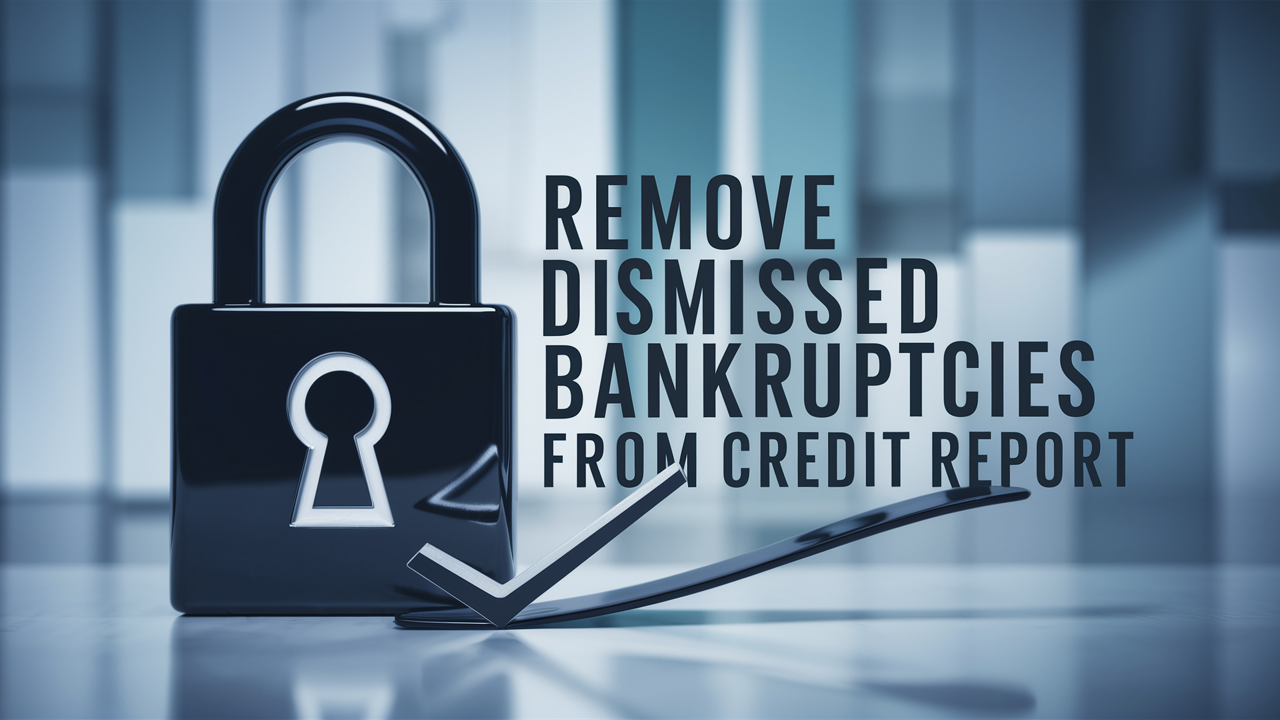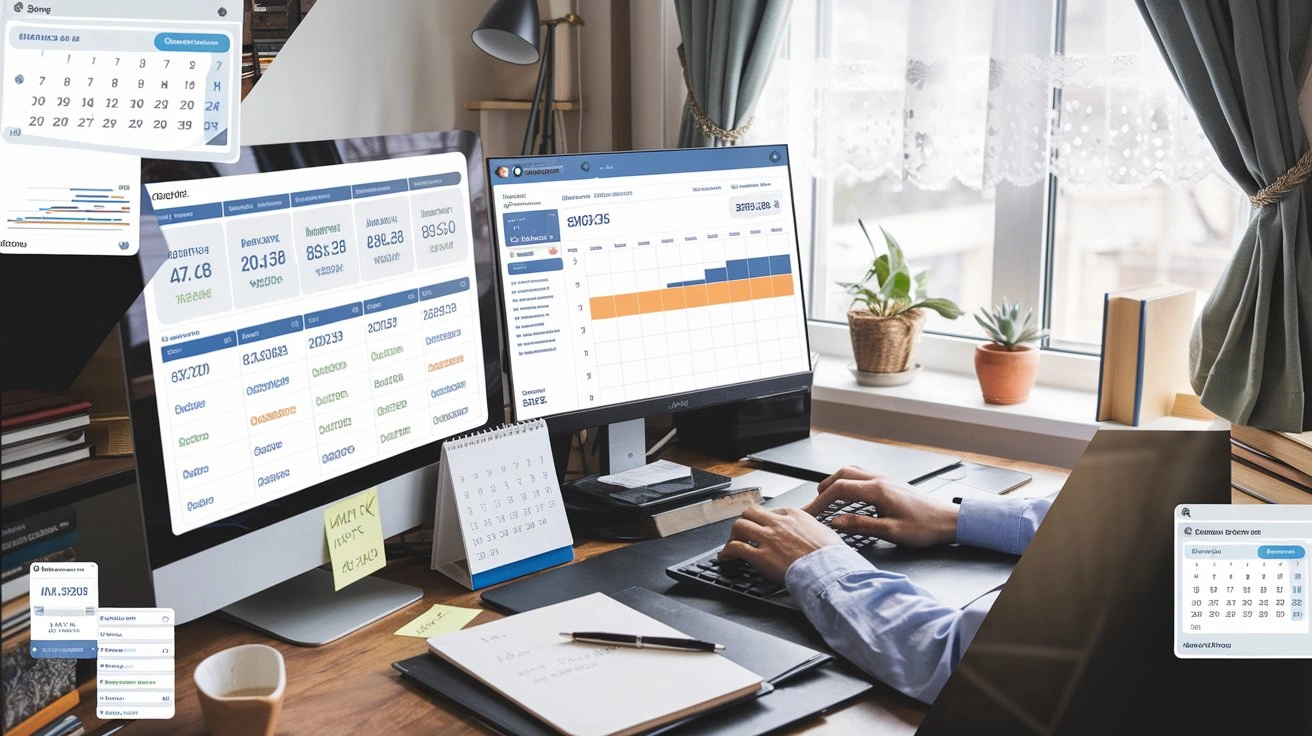How to Remove Dismissed Bankruptcies from Credit Report

A dismissed bankruptcy can feel like a shadow that stays on your credit report. It may make it harder for you to get loans, rent an apartment, or find good insurance rates. But knowing how bankruptcies affect your credit report can help you understand your rights. This knowledge can enable you to take control of your finances. This guide will examine how to remove dismissed bankruptcies from your credit report. It will also show you a clear way to achieve a fresh start.
Understanding Bankruptcy and Its Impact on Your Credit Report
Bankruptcy is a legal way for people or businesses who can't pay their debts to get help. When someone files for bankruptcy, this information becomes public. Many think it will always show up on their credit report. However, it's not the bankruptcy court that informs credit reporting agencies directly. Instead, companies like LexisNexis and LCI collect this public info. They then share it with the major credit bureaus.
Having a bankruptcy on your credit report, even if it gets dismissed, can hurt you. It can lower your credit score by a lot. This makes it tough to get new credit, find good loan rates, or even rent a place to live. It's important to understand how different types of bankruptcies can affect your report. This way, you can better manage the process to remove it.
The Basics of How Bankruptcy Affects Credit Scores
A bankruptcy filing can cause your credit score to drop a lot. This decline can be between 100 to 200 points or more. It often depends on your past credit history and how serious your money issues are. The bankruptcy process looks at what you owe, what you own, and your income. This review helps decide the best way to pay back your debts and affects how much your credit score suffers.
The major credit bureaus, which are Experian, TransUnion, and Equifax, calculate your credit score using complex formulas. When they see a bankruptcy filing, they view it as a high-risk situation. This tells lenders that you have faced major financial problems. Because of this, lenders may offer you loans with higher interest rates and harder terms. It can also make it tough for you to get new credit.
So, it is important to know how bankruptcy impacts your credit score. This understanding will help you make better financial choices and take the right steps to fix your credit. By dealing with these problems early on, you can start to heal the harm done and work towards your financial goals.
Types of Bankruptcies and Their Specific Impacts on Reports
Two common types of bankruptcy are Chapter 7 and Chapter 13. They affect your credit report in different ways. Chapter 7, also called liquidation bankruptcy, means selling things that are not protected to pay back creditors. This type of bankruptcy can stay on your report for up to 10 years. It shows a more serious form of getting rid of debt.
On the other hand, Chapter 13 is known as reorganization bankruptcy. It lets people keep their things while following a repayment plan set by the court. This plan usually lasts for 3 to 5 years. Although Chapter 13 can harm your credit less than Chapter 7, it still shows up on your report for up to 7 years. No matter which type you choose, if a bankruptcy is dismissed, it can stay on your report and affect your chances of getting credit.
Legal Grounds for Removing Dismissed Bankruptcies from Your Credit Report
Having a dismissed bankruptcy on your credit report can be upsetting. However, there is some good news. You have legal options to fix this. The Fair Credit Reporting Act (FCRA) can help you change wrong information on your credit report. Knowing your rights under this act is important for getting rid of a dismissed bankruptcy successfully.
The Role of the Fair Credit Reporting Act (FCRA)
The Fair Credit Reporting Act (FCRA) is important for keeping credit reports accurate and fair. It controls how credit reporting agencies collect, share, and use information. The FCRA protects consumer rights by making sure credit bureaus give correct data, look into disputes, and quickly remove any inaccurate information. This act allows people to challenge mistakes on their reports, like false bankruptcies and makes sure credit reports show real financial histories. Following FCRA rules helps make the credit reporting process clearer and more accountable.
When Can You Dispute a Bankruptcy Entry?
You can use the FCRA to challenge any bankruptcy entry on your credit report that seems wrong or cannot be verified. This applies if the bankruptcy was dismissed, if the filing date is wrong, or if the personal information linked to it is not accurate. It is important to have proof, like court papers or bankruptcy discharge papers, when you make a dispute.
Also, if you feel the information is unverifiable because of redaction rules in Bankruptcy Rule 9037, you can question how the credit bureau verifies the information. This rule aims to protect private personal information in court records, which can make it hard for credit bureaus to connect a bankruptcy to a person's credit report.
Step-by-Step Guide to Dispute a Dismissed Bankruptcy
Disputing a dismissed bankruptcy needs a clear plan to make sure your request is correct and complete. You should gather the important documents first. Then, write a clear dispute letter. It is also important to know how to communicate with credit bureaus. If you follow these steps, you can improve your chances of having it removed.
Preparing Your Dispute Letter: Key Elements to Include
At the core of a good dispute is a carefully written dispute letter. This letter should explain the errors related to your dismissed bankruptcy. It must state your request to remove the entry and give strong evidence to back up your claim. Here’s what you should add:
-
Personal Information: Start your letter with your full legal name, current address, date of birth, and Social Security number.
-
Credit Report Details: Name the credit report (Experian, TransUnion, Equifax) where you see the dismissed bankruptcy.
-
Error Description: Clearly describe the error. Stress that the bankruptcy was dismissed and does not represent your current financial situation. Note if the filing date or any personal details need fixing.
-
Supporting Documentation: Attach copies of important documents. This might include bankruptcy discharge papers, court orders, or any letters showing the dismissal. Always send copies, never the originals.
-
Request for Removal: Ask for the removal of the dismissed bankruptcy from your credit report.
-
Certified Mail: Send your dispute letter via certified mail with a return receipt. This helps you confirm delivery and shows that the credit bureau has it. Keep copies of all your documents for your records.
Navigating the Dispute Process with Major Credit Bureaus
Each credit bureau has procedures for handling disputes. Familiarity with their processes is essential for effective communication.
| Credit Bureau | Mailing Address | Online Dispute Portal |
| Experian | P.O. Box 4500, Allen, TX 75013 | www.experian.com/disputes/main.html |
| TransUnion | P.O. Box 2000, Chester, PA 19016 | www.transunion.com/credit-disputes/dispute-credit-report |
| Equifax | P.O. Box 740256, Atlanta, GA 30374-0256 | www.equifax.com/personal/credit-report-services/credit-dispute/ |
Once you've sent your dispute letter, the credit bureau typically has 30 days to investigate and respond. They'll review your submitted evidence and contact the data furnisher (LexisNexis or LCI) to verify the accuracy of the information. You'll receive confirmation of their findings in writing, detailing whether the disputed information will be corrected or removed.
Persistence is key throughout the process. If the initial dispute is unsuccessful, don't hesitate to file a follow-up dispute, providing additional evidence or clarification as needed. You can also submit complaints to the Consumer Financial Protection Bureau (CFPB) or the Federal Trade Commission (FTC) if you believe the credit bureau handled your dispute unfairly. Remember, you have the right to accurate credit reporting.
Monitoring Your Credit Report Post-Dispute
After starting a dispute, it's really important to check your credit report often. This helps you see if the changes you want are showing up correctly. By keeping an eye on it, you can find and fix any mistakes quickly. This way, a dismissed bankruptcy can be removed correctly.
How to Check If the Dismissed Bankruptcy Is Removed
Begin by getting your free credit reports from Experian, TransUnion, and Equifax at AnnualCreditReport.com. Check the "Public Records" part of each report for any mention of the dismissed bankruptcy. It is important to look at these reports carefully because mistakes can happen.
After you confirm the removal, stay alert. Regularly checking your credit reports, even after a successful dispute, helps keep your financial records correct. If the dismissed bankruptcy comes back or if you find any inaccuracies, quickly start a new dispute with the credit bureau.
Next Steps After Successful Removal
Having the dismissed bankruptcy taken off your credit report gives you a chance for a fresh start. This can help you work toward a good credit score. While it doesn't change the past, it lets you rebuild your credit by managing your money wisely.
It's important to create good credit habits. Make sure to pay your bills on time. Keep your credit usage low and try different types of credit, like a secured credit card. Doing these things can help improve your credit score over time. By being responsible with your credit, you can show lenders that you are financially stable.
Conclusion
In conclusion, it is important to understand how to remove dismissed bankruptcies from your credit report. This helps you keep a healthy credit score. You can use your rights under the Fair Credit Reporting Act. By following the steps in this guide, you can dispute and possibly get rid of wrong bankruptcy entries. After you dispute, keep an eye on your credit report. This is important to ensure that dismissed bankruptcies are removed. Remember, it may take time for the removal to happen, so be patient. Stay informed about your rights and take charge of your credit health.



